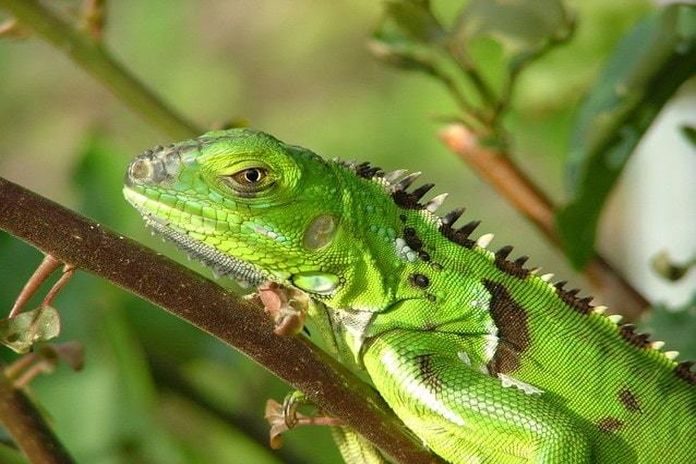GEORGE TOWN, Cayman Islands (CNS) – Even though this year saw a vast number of hatchlings emerge during the green iguana breeding season, the national cull has cut the number of this invasive reptile dramatically. One year after the army of registered cullers hit the bush, they have reduced the population by more than 90 percent, officials from the department of environment revealed in the latest issue of the Terrestrial Resources Unit’s magazine, Flicker.
According to the summer’s population count, the remaining green iguana population was down to about 103,000, a 92 percent reduction in the headcount since the cull began in October 2018. This year’s hatchlings began to emerge during and after the survey but the cullers are keeping on top of the breeding season.
Over the past seven weeks the number of culled iguanas turned into the counting station at the George Town landfill has risen steadily, where “bucketful after bucketful of hatchlings” are being brought in, the article said.
“While we have no direct measure of the number of green iguana hatchlings that have emerged this year, we should be mindful that it represents the reproductive output of the breeding iguanas that were nesting earlier this year when there were many more surviving adults than is the case today,” the experts said, adding that the emergence of hatchlings was inevitable and expected.
The number of young iguanas around now illustrates how powerful the invasive iguana reproductive potential is, especially as the cull reduced the pressures of crowd competition.
“This is a reminder that the cull, which is fast approaching the one million mark, will always be chasing a moving target,” the unit stated. “The total green iguana population has evidently rebounded far above August’s 103,000. The cullers have a significant challenge to overpower the hatchling emergence and keep us on track to resume a net decline and a much-reduced breeding population by next summer.”
The cull is expected to continue into 2020 and registration continues to be open for Caymanians to join during working hours at the reception facility at the entrance to the landfill. Cull training opportunities are also available for Caymanians who wish to become cullers but who need to learn the skills and practices.
Republished with permission of Cayman News Service





